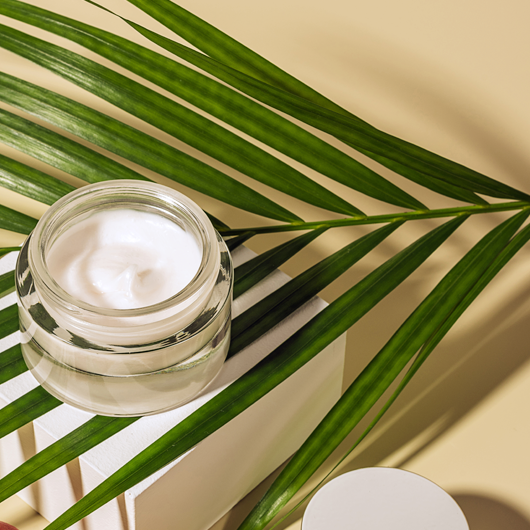Alpha Lipoic Acid
Revive Dull Skin with Alpha Lipoic Acid
Sources: Green leafy vegetables, red meat, rice bran, yeast, potatoes, yams, beets
Common Name: {ALA, Alpha Lipoic, Thioctic Acid}
Alpha Lipoic Acid (ALA) is one of today's most potent antioxidants. Likewise, researchers have shown that it has 400 times the power of Vitamin C and E, consequently being coined "the miracle in a jar".
ALA is a universal antioxidant because it is both water-soluble and oil-soluble. As a result, it is a very long-lasting nutrient that can help fight free radicals in any part of a skin cell.
Alpha-Lipoic Acid produces enzymes that digest collagen, subsequently leading to wrinkles. This is because the inner area of a cell, or the in-between area of cells, is attached.
Not only does it increase a cell's metabolism, but it also gets rid of cross-linked collagen by allowing the cell to replenish itself with more nutrients and excrete wasteful toxins. This ingredient is a must in any anti-aging skincare routine.
If you are over 30, consider adding this essential nutrient as a nutritional supplement and ingredient to your skincare products. For instance, it helps reduce the appearance of fine lines and wrinkles, under-eye puffiness, enlarged pores, and redness.
Lipoic acid works by activating the transcription factors in AP-1 by helping to digest and eliminate aged collagen.
ALA helps Vitamin C and E work more effectively in the body by increasing the levels of glutathione that exist in the body. The superior antioxidant power is more than 400 times that of Vitamin C alone.
Alpha Lipoic Acid In Nature
Though lipoic acid is produced naturally in the body, it can also be chemically synthesized from other acids and foods.
The superacid can mainly be found in the liver and heart of animals. Likewise, it is contained in blood-rich meats, green, leafy vegetables, and even yeast. Almost every natural food in the world includes lipoic acid. ALA is part of what gives cells their structure and can protect them from environmental harm, such as free radicals.
It has incredible health benefits when taken orally, including reducing the symptoms of chronic diseases like Alzheimer's and MS and alleviating migraines. In addition, the health and fitness community has added it to weight loss and energy products to promote a more active lifestyle.
- Lipoic acid is a potent and versatile antioxidant.
- It is a co-factor in an essential biochemical pathway responsible for cell energy production.
- It inhibits cross-linking. Cross-linking of collagen contributes to the aging process and causes skin wrinkling.
- It neutralizes and removes waste from the body.
Alpha Lipoic Acid In Cosmetics
In cosmetics, Alpha Lipoic Acid is a powerful antioxidant. For example, it has been called "the miracle in a jar" for its effective, ultrapotent antiaging properties. Consequently, Dr. Perricone uses Alpha Lipoic Acid religiously in his anti-aging skincare line.
Many other cosmetic companies use ALA because it provides the best protection against the havoc done by free radicals. In addition, applying it to the skin helps protect cells from premature aging from pollution, toxins, and environmental hazards.
Vitamin C, for example, can be recycled through lipoic acid. Along with their antioxidant prowess, these acids are also anti-inflammatory. Above all, this means it can reduce the appearance of redness in the skin and promote the skin cells' regeneration process.
Many anti-aging serums and cleansers contain Alpha Lipoic Acid. Additionally, it can be added to make up to improve the look of skin throughout the day.
Anti-Aging Antioxidant
Some studies suggest that it can help those with premature aging by wiping out the redness that occurs after sun exposure. Importantly, for those with sensitive skin, adding ALA can be beneficial in fighting inflammation and in relieving redness.
While there are no substantive studies to this effect, ALA can improve the look and feel of skin and even the appearance of rough, dry, or reddened patches.
Many dermatologists recommend using lipoic acids for their patients who want to diminish both the look of fine lines and wrinkles.
It revitalizes each cell by absorbing their restorative properties deep in the tissue. Once on the skin, it plumps the cells' look, effectively filling in lines and wrinkles. Plus, it stamps out any redness or dryness. It even helps brighten dull, grayed, or sallow complexions for glowing skin.
Alpha Lipoic Acid is a superior antioxidant that will give your skin a healthy glow, diminish fine lines, and boost your complexion. Moreover, use it topically or as a nutritional supplement for a more beautiful and youthful look!
The 7 Best Foods That Contain Alpha Lipoic Acid
- Beets
- Brewer's Yeast
- Broccoli
- Carrots
- Peas
- Tomato
- Steak (red meat including organs such as the liver)
Homemade 5% Alpha Lipoic Acid Cream Recipe
- 1 oz. Organic Coconut Oil
- 1 tsp. Rose Hydrosol
- 0.5 tsp. Glycerin
- 0.05 oz. Alpha Lipoic Acid Powder
- 12 drops Essential Oils (we recommend using a combination of Palmarosa, Frankincense, and Carrot)
This recipe is for a cold-pressed topical cream. You can easily make this a traditional cream and use any oil you would like. Heat the oils and combine the additional ingredients by pouring them into the oil and blending with a hand mixer.
Directions:
Add the rose hydrosol to a glass Pyrex measuring cup with a spout. Dissolve the Alpha Lipoic Acid in the water or other solvent. Add the glycerin. Set aside.
In a glass bowl, combine the Coconut Oil. Begin pouring in the water mixture and blending with a hand mixer. Add the essential oils and blend until smooth.
Scoop the lotion out and place it into tin jars.
About the Author
Kari Thomas wrote this article.




